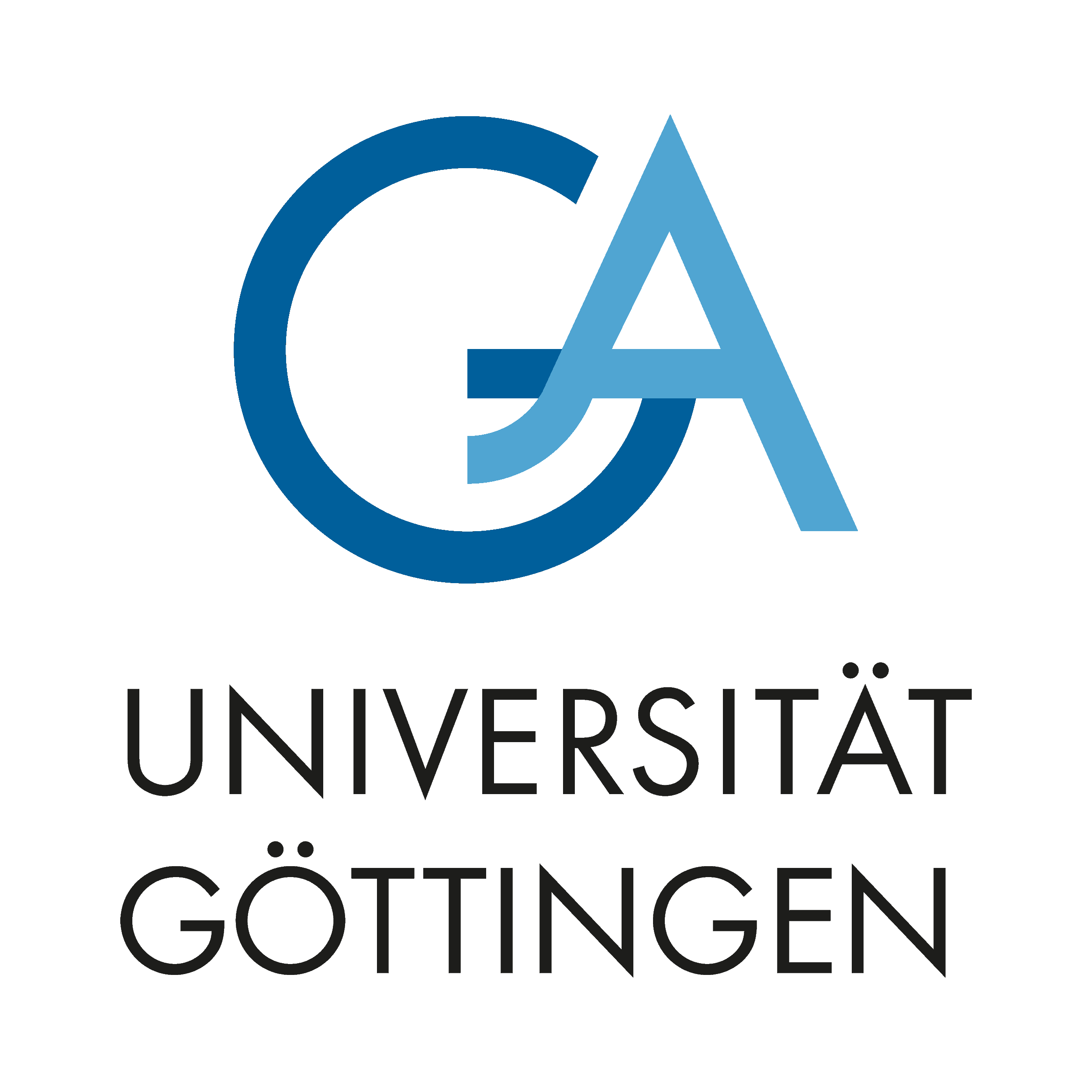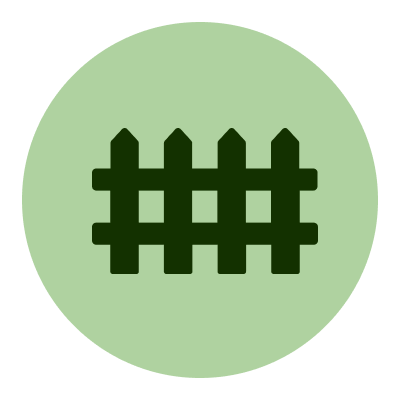Project Team & Partner
Together with the Georg-August University of Göttingen, BUND Thüringen started monitoring the lynx in northwest Thuringia in 2019. It quickly became clear that a successful dispersal of the lynx in Thuringia and Central Germany would only succeed if the animals were actively introduced. In 2021, the WWF joined the project. Together, the course was set for the project "Lynx Thuringia - Connecting Europe's Lynxes," in which 10 project partners are now committed to the permanent comeback of the lynx in Thuringia's forests.
Team

Lynx Expert BUND
Dr. Markus Port
Markus Port works for BUND Thüringen and is the expert on lynx in Thuringia. As a research assistant at the University of Göttingen, Markus worked on the lynx in Hesse between 2014 and 2020. Since then, he has been committed to supporting the dispersal of the lynx through active introductions. Since 2019, he has been leading the lynx project of BUND Thüringen.
Email: m.port@bund-thueringen.de
Telephone: 0160 98011164

Lynx Expert WWF
Dr. Max Boxleitner
Max Boxleitner is the lynx expert at WWF Germany and coordinates the lynx population support in Thuringia with Markus Port. In addition to logistical and organizational tasks, one of his main focuses is public relations.
Email: max.boxleitner@wwf.de
Telephone: 0151 18854867

Press and public relations officer
Kerstin Neumann
Kerstin Neumann is responsible for press and public relations at BUND Thüringen. She coordinates media enquiries, supports journalistic reporting and organises media support for the project. Together with the project team, she also plans and organises on-site events and excursions to raise public awareness of the lynx and its return to Thuringia.
Email: k.neumann@bund-thueringen.de
Telephone: 0176 13338510

Managing Director Wildtierland Hainich GmbH
Dr. Katrin Vogel
Katrin Vogel is the managing director of Wildtierland Hainich gGmbH and is in charge of the BUND Wildkatzendorf Hütscheroda. She is responsible for the new lynx coordination enclosure and also supports the project through public relations work on-site.
Email: katrin.vogel@wildtierland-hainich.de
Telephone: 036254 865180
Partner

BUND THURINGIA & GERMANY
With more than 674,000 supporters, the Bund für Umwelt und Naturschutz Deutschland (BUND) is one of the largest environmental and nature conservation associations in Germany. In the Thuringian regional association, around 7,000 members and supporters are committed to the protection of nature and the environment for more than 30 years. Current projects include the preservation of the Southern Thuringian gypsum karst landscape, the cross-linking along the Green Belt and the protection of garden dormice, wild cats and lynx. BUND works independently of politics and business. It sees itself as an advocate of nature and serves exclusively non-profit purposes. The association is financed through its own funds, including donations and membership fees.
www.bund-thueringen.de
www.bund.net
Project role
Together with WWF, BUND Thüringen is in charge of releasing the lynx into the Thuringian Forest and monitoring the newly emerging lynx population. As the central project coordinator, BUND is also responsible for the overall organization of the project and coordination with the Thuringian authorities.

WWF GERMANY
The World Wide Fund For Nature (WWF) is one of the largest and most experienced nature conservation organizations in the world and is active in almost 100 countries. It aims to stop the global destruction of nature and the environment, preserve biodiversity, protect habitats and shape a future in which people and nature live in harmony. The Environmental Foundation WWF Germany, as part of the international WWF network, is based in Berlin and is a foundation under civil law.
www.wwf.de
Project role
WWF supports the return of the lynx in various projects throughout Germany and Europe. With decades of experience, a strong network, and expertise in working with stakeholders as well as in the field of communication and public relations, WWF wants to contribute to a successful return of the lynx to the Thuringian Forest. WWF and BUND Thüringen together form the core team of the Thuringian Lynx Project.

WILDCAT VILLAGE HÜTSCHERODA
The Wildcat Village in Hütscheroda, which opened in 2012, is committed to wildcats and lynxes. The lynx show enclosure has been in place since 2019 and is open to the public.
www.wildkatzendorf.de
Project role
The WildCat Village Hütscheroda includes a lynx show enclosure with a lot of natural cover as well as the new, specially built coordination enclosure, where genetically suitable enclosure lynxes can be specifically prepared for a life in the wild. In the wildcat village and in the adjoining "wild cat barn," you can learn about the wildcat, as well as its big relative, the lynx.

THÜRINGENFORST
The majority of the Thuringian Forest is state forest and is managed by ThüringenForst district foresters. Since January 2012, the approximately 1,300 employees of ThüringenForst have been performing their forest-related tasks in Thuringia in the organizational form of an institution under public law (AöR).
www.thueringenforst.de
Project role
ThüringenForst plays a major role in the monitoring and protection of lynx in the region. As part of the photo trap monitoring, ThüringenForst assists in the search for suitable sites and the control of cameras. Another important contribution to the project is the construction and maintenance of the soft-release enclosure. In this enclosure in the Thuringian Forest, the lynxes are housed prior to their release into the wild, so that they can get used to their future environment. In addition, ThüringenForst supports the monitoring of hoofed game accompanying the project.

ACDB
The Asociaţia pentru Conservarea Diversităţii Biologice (ACDB) is a Romanian NGO dedicated to the conservation of the large carnivores lynx, wolf and bear native to Romania. ACDB was involved in a large, recently completed lynx reintroduction project in Slovenia and Croatia ( Life Lynx), and relocated several lynx from the Eastern Carpathians to Slovenia for this project.
www.acdb.ro
Project role
Together with the Romanian Forestry Administration Romsilva, ACDB carries out the monitoring of the lynx in Romania. ACDB's experienced project staff are also responsible for catching the wild lynx and transporting them to Thuringia.

ROMSILVA (ROMANIAN FORESTRY SERVICE)
Romsilva is the state forest administration in Romania and, thus, the landowner of a large part of Romania's forests (95%).
www.rosilva.ro
Project role
Together with ACDB, the Romanian Forestry Administration Romsilva carries out the monitoring of the lynx in the Romanian Carpathians. In addition, Romsilva oversees the construction and maintenance of a quarantine station where the health of captured lynx can be checked before they are transported to Germany.

THURINGIAN HUNTING ASSOCIATION
The Landesjagdverband Thüringen e. V. (LJVT) was founded on March 3, 1990. On Oct. 3, 1990, the LJVT became a member of the Deutscher Jagdschutzverband e. V. (DJV). The lynx is covered by the Hunting Act. Therefore, the LJVT is committed to the conservation of the lynx in the Thuringian Forest.
www.ljv-thueringen.de
Lynx Officers
Project role
The Thuringian Hunting Association is involved in the monitoring of lynx in the Thuringian Forest and has trained so-called together with the project team. These hunters can be contacted in the event of lynx sightings and reports of kills. With their knowledge and the necessary material for taking genetic samples, the lynx officers can carry out kill analyses. The association also plays an important role in providing information through and for the members (7,000+).

GEORG AUGUST UNIVERSITY GÖTTINGEN
The University of Göttingen is an internationally important research university with a long tradition. Within the university, the departments of Conservation Biology and Wildlife Science are involved in the project. The research focus of the Department of Conservation Biology is on population biology and biodiversity research, while the Department of Wildlife Science is mainly concerned with the interactions between wildlife and their habitats in different (forest) ecosystems.
Department of Conservation Biology
Department of Wildlife Science
Project role
The Department of Conservation Biology at the University of Göttingen supports the project partners in the planning and implementation of the monitoring and the scientific evaluation of the recorded data. Accompanying the project, the Department of Wildlife Science is conducting long-term monitoring of the lynx's prey in the project area in the Thuringian Forest together with the WWF. In addition, the University of Göttingen takes care of animal welfare issues.

UNESCO BIOSPHERE RESERVE THURINGIAN FOREST
The UNESCO Biosphere Reserve Thuringian Forest is one of 18 biosphere reserves in Germany. With an area of 337 square kilometers and the first recognition by UNESCO in 1979, at that time under the name Vessertal, it is one of the two oldest biosphere reserves in Germany. Located in the central Thuringian Forest, this biodiversity hotspot with its protected areas is a core area for the return of lynx.
www.biosphaerenreservat-thueringerwald.de
Project role
The UNESCO Biosphere Reserve Thuringian Forest is of high importance for public relations and environmental education. Among other things, information events are to take place here, and information boards are to be installed. These will provide visitors with information about the lynx and the project. Through such measures, the biosphere reserve helps to raise awareness of the lynx and the need for its protection and to involve the local population in conservation measures.

THURINGIAN FOREST NATURE PARK
The Thuringian Forest Nature Park encompasses the Thuringian Forest mountain range, parts of the Thuringian Slate Mountains and the foothills. It stretches in a wedge shape from Sonneberg and Saalfeld in the southeast to Eisenach in the northwest. With a size of over 220,000 hectares, it is spatially the largest National Natural Landscape in Thuringia.
www.naturpark-thueringer-wald.de
Project role
The Thuringian Forest Nature Park participates in public relations and environmental education. Information events about the lynx in Thuringia will take place, and information boards about the project and the lynx will be set up.
Unterstützer

LINKING LYNX
Linking Lynx is a network of experts working on the conservation, monitoring and management of the Carpathian lynx. The aim of this network is to create a viable Central European lynx metapopulation in the long term by supporting reintroductions and strengthening genetically impoverished populations. Linking Lynx comprises six working groups ( sourcing, genetics, health, policy, monitoring and public engagement), in which important guidelines and recommendations have been developed on which the Luchs Thüringen project is based. The sourcing of lynx from captive breeding is also coordinated via the network.
www.linking-lynx.org

EAZA
The European Association of Zoos and Aquaria (EAZA) is an umbrella organization in which over 400 zoos and aquariums are organized. Part of EAZA is the European Ex-Situ Breeding Program (EEP), through which animal species kept in zoos are specifically bred. The EEP has also been breeding Carpathian lynxes for decades. Since 2023, lynx have also been bred specifically for release into the wild. These animals are an important part of the Lynx Thuringia project, as the need for animals to establish a population in the Thuringian Forest could not be met by wild-caught animals alone.
www.eaza.net














